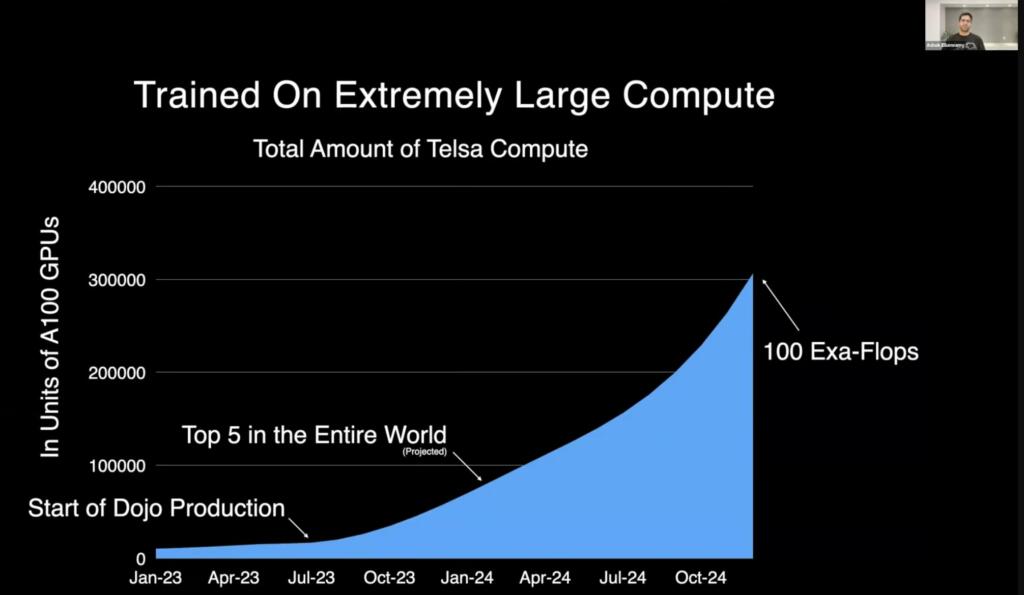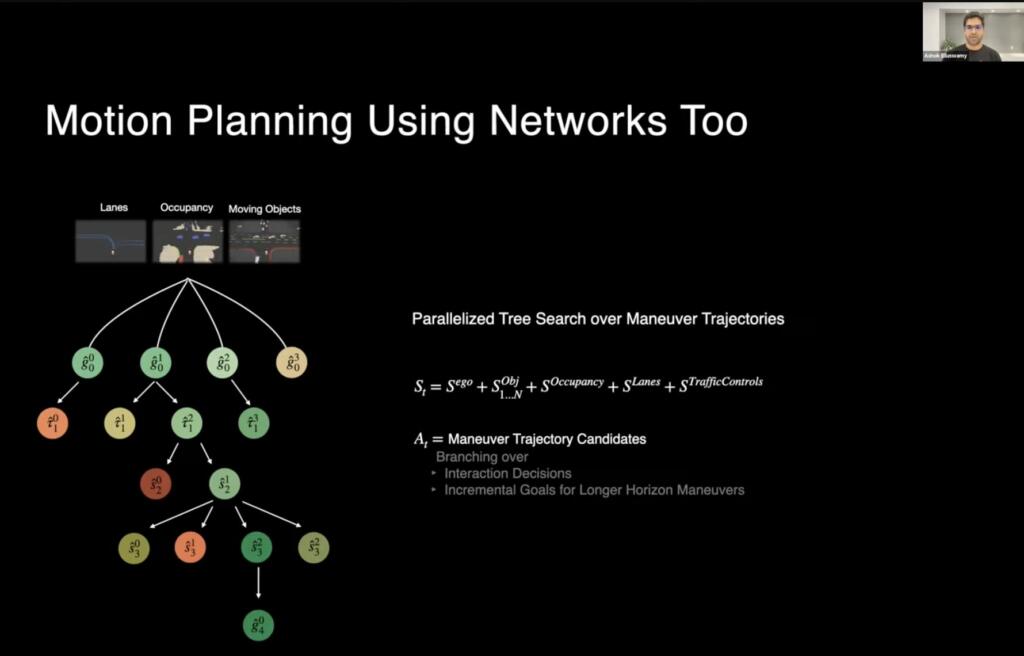Tesla FSD and Autopilot used to require complete retraining when the cameras were moved on Tesla vehicles. Tesla AI lead, Ashok Elluswamy, has now said that Tesla can now even use video of driving from Youtube. This means the cameras can be moved and Tesla can still use the driving video for its General AI. This means that different cars with different cameras and different camera positions were used.
The new general driving video capability means that if Tesla succeeds with FSD then they will be able resell the software to other car makers with different car models and different camera positions.
It also means that Teslabot training can proceed quickly, as the bot has different cameras and camera positions.
Tesla will be doubling its driving AI supercomputer processing power once every three months. This and foundation of full neural network processing of video should increase the rate of improvement for all of Tesla AI.
Tesla now has over 250 million miles of FSD driving data. Tesla can use all 10 billion miles per year of driving data from all of its cars for training and 2 billion miles per year of dedicated FSD driving data.









There are reports from Connecting the Dots that Tesla now has about 100 Teslabots working in their research labs and perhaps a few dozen in their factories. Connecting the Dots revealed this information in an interview he had with Tesla Herbert and Scott Walker.
Tesla can do a lot of Teslabot training via reinforcement learning and simulation.
There are reports that Teslabots can handle wiring. This would be hugely useful for wiring Tesla cars in the factory.
Scott Walker repeated his point that real world data with real world Teslabots will be needed to complete the training of Teslabots. If the cost for Tesla is $10,000 per Teslabot with mass produced Teslabots, then $1 billion of hardware research budget would enable the creation of 100,000 Teslabots and this would use the battery supply of 5000 Model Y cars.
Tesla will want to create profitable use cases and business models for in-training Teslabots. This would follow Tesla making and selling autopilot for driver assist and a beta version of FSD.
The first Teslabot use cases will be:
Observer or security guard bots. Using the mobile camera capability.
Warehouse bots for moving boxes and parts. There are reports of useful factory operations involving moving and placing parts precisly already.
Basic factory bots for moving parts.
Combined with robotaxi and robotrucks there will be delivery bots. This would replace UberEats at scale.
Tesla could create a voice controlled bot to act as a walking super-iPhone, TV or camera. It would have 100-200 times the battery capacity and 200 times the compute of your iPhone, It could charge your other portable devices.
Tesla now has over a hundred Teslabots in development. It would make sense for Tesla to scale to a few thousand bots for training to work out basic capabilities, safety and a base of rapid AI training. Once the foundation of capability is a bit more advanced, the speed of development would be maximized with mass production of hundreds of thousands of Teslabots next year and the release and sale of bot developer kits to bot development partners and bot application developers.
Tesla with 100,000 Teslabots in the Tesla factories could halve labor costs by 2025. This would also mean being able to increase production by 50-100% by redeploying human factory workers to more rapidly expanded Tesla factories and new production work shifts.
In 2025, Tesla with millions of Teslabots in factories and sales for early applications will be the most valuable Tesla product. Tesla will be multiplying the hard production capability and sales of Tesla and SpaceX in 2025-2026.




Warren Redlich, Tesla Herbert and Randy Kirk described their optimism for Teslabot and FSD/Robotaxi. They described what this will mean for exploding Tesla revenues.

Brian Wang is a Futurist Thought Leader and a popular Science blogger with 1 million readers per month. His blog Nextbigfuture.com is ranked #1 Science News Blog. It covers many disruptive technology and trends including Space, Robotics, Artificial Intelligence, Medicine, Anti-aging Biotechnology, and Nanotechnology.
Known for identifying cutting edge technologies, he is currently a Co-Founder of a startup and fundraiser for high potential early-stage companies. He is the Head of Research for Allocations for deep technology investments and an Angel Investor at Space Angels.
A frequent speaker at corporations, he has been a TEDx speaker, a Singularity University speaker and guest at numerous interviews for radio and podcasts. He is open to public speaking and advising engagements.


It’s a shame there isn’t some standardized interface for vehicle controls, sorta similar to OBD2, allowing people to plug in FSD computers essentially. It divorces the car from the computer, and could allow vehicle safety organizations to do standalone testing.
I would have thought it would have been in the government’s best interest to support an open interface standard for FSD systems, including a government baseline FSD that is under a semi-restrictive open-source model (available for free to domestic makers for domestic cars, license fees for international makers)
There are other categories for the Teslas Robotics system besides Cars/Trucks and humanoid robots.
It solves machine vision in a general way. It can be used in Tesla (and other) factories to move them toward Alien Dreadnought status. While Teslabots will be great to drop in as replacements for residual human labor, most of future factories will use specialized machinery for most tasks. That machinery can be a lot smarter and more flexible when made part of the Dojo and other training SC & HW4+ family.
Work Vehicle Robots. Specialized vehicles that do jobs. Forklifts, Tractors, Street Sweepers, Bulldozers, Combines, Snow Plows, lawn mowers, etc.
Cloud AI for Big Data Image recognition. If SpaceX puts cameras and other Earth observation sensors into Starlink and or laser linked to Starlink (including StarShield) it can observe everywhere on Earth 24/7/365 in detail. That generates a firehose of data that their image recognition AI can master.